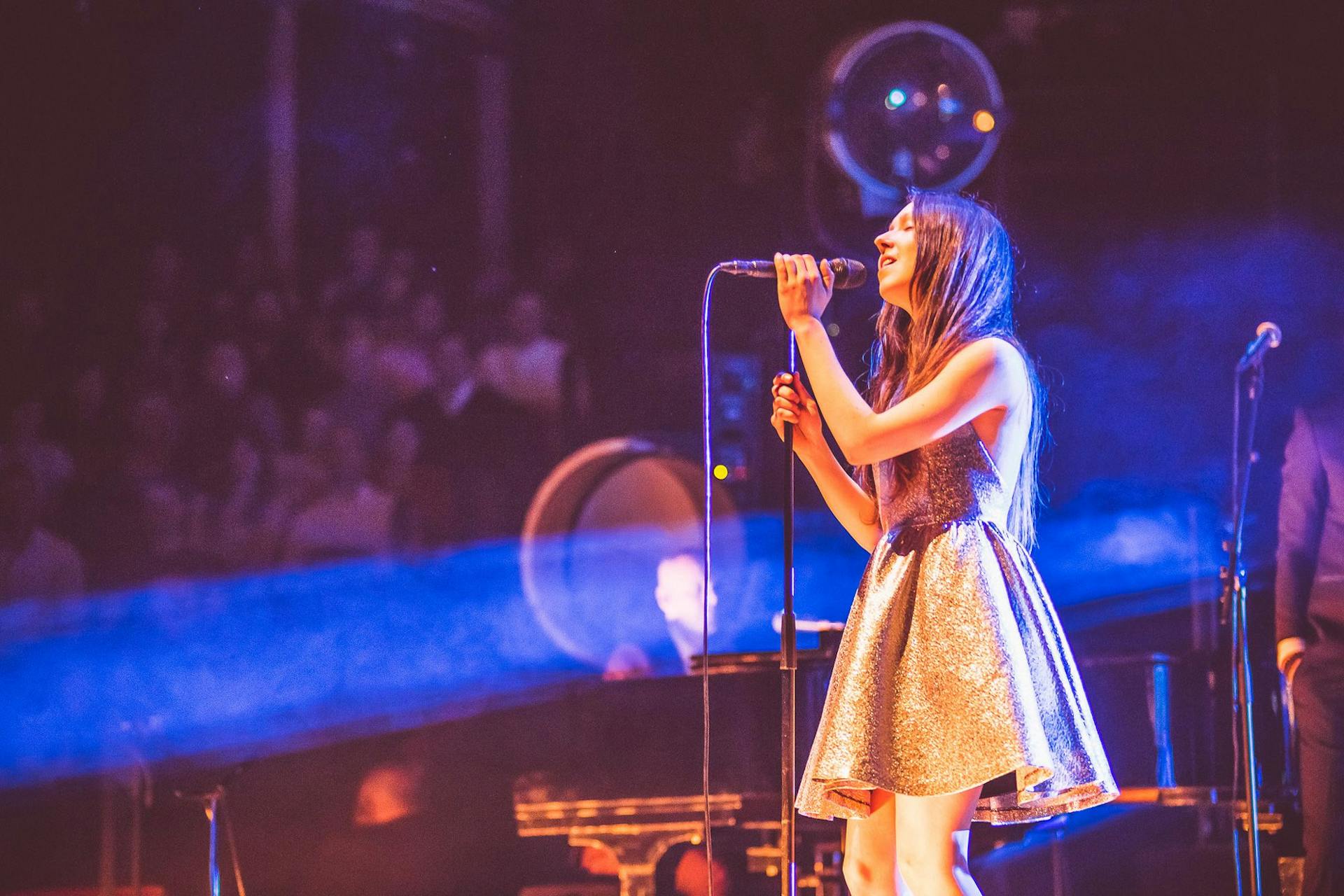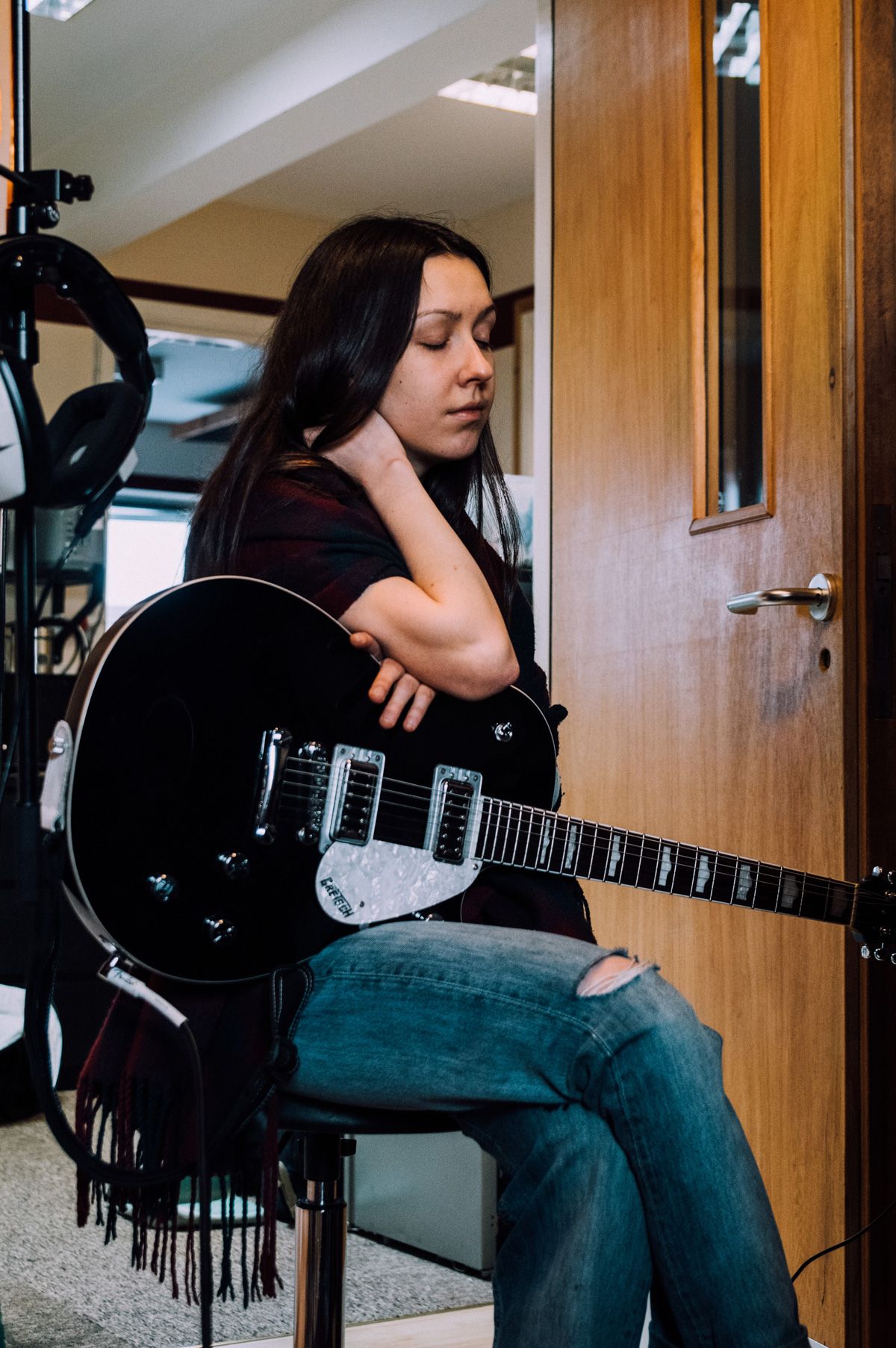How singer Natalie Holmes rediscovered her voice after muscle tension dysphonia
updated on Feb 11, 2022

A decade in the industry left singer-songwriter Natalie feeling fragile and disillusioned. But finding new ways to connect with her audience has given her the freedom to create and share music that calms and induces feelings of wellbeing
As soon as I uploaded my first YouTube video in 2010, I was addicted to the euphoria of sharing my songs with the world. I truly loved making music, with no questions or doubts, and it was only towards the end of university in 2013 that the light began to cloud.
My songwriting was being analysed and graded, and I was being asked by promoters how many tickets I could sell if they booked me, how many Facebook likes I had, or whether I could bring enough friends to ramp up the bar takings. Rarely did the music come into it.
The vicious cycle had begun – I couldn’t get the better gigs if I didn’t already have an audience, yet I couldn’t build a reliable audience without gigs. Those I could get were hours of cover versions to drunken bar crowds, or (often better) to absolutely no one.
I began to question the value of what I could offer the world, as people treated me like a free jukebox. I wanted to play to people, but I wanted to play to people who wanted to be played to. When those gigs came along, they melted some of the ice inside.
I started booking my own tours, seeking out shows designed for music lovers wanting to discover and connect with an act, so that I wasn’t trying to fit into somebody else’s mould. This was progress, and I loved meeting and staying with new people, and experiencing their kindness and passion for music.
Shortly after university, in 2015, I had my first bout of MTD (muscle tension dysphonia) – which is a change in the sound or feel of your voice due to excessive muscle tension in and around the voice box.

I’d never heard of it before, and after learning it wasn’t a physical ailment, but a culmination of learned bad habits, there was no clear way out, and it was torture. Six months of speech and language therapy saw me through some of my darkest days, teaching me that both speech and singing gave me purpose and connection with life. Somehow, I eventually walked out of that hospital labelled ‘fixed’, and continued to strengthen my voice.
Somewhere around that time, Instagram really took off. The sudden expectation to be using this tool incessantly to broadcast every step of my journey was when the pressure on me really began to grow.
Luckily, in 2016, I got my first huge opportunity – a chance to showcase myself doing something wonderful, exciting and impressive, touring as a vocalist with a well-known group. Instantly the anxiety eased. I could objectively prove that everything I’d worked for up until then had amounted to something. I felt valued, and every day I had new photos of me performing to thousands of people to confirm it.
I’m glad this was the way it happened for me, as it never felt forced or faked; I was with a group of mindful, loving human beings who made that tour genuinely beautiful. This is far too rare in the music industry.
After a rollercoaster three months, I moved home again, but the pressure I’d left behind was waiting. Singing somebody else’s material to thousands hadn’t had the biggest impact on my own audience. However, I had a European tour to look forward to with friends – me and two other acts. We felt appreciated and valued, even when we weren’t making any money.

In 2017, I used this new layer of confidence to move out of my parents’ house for the first time. This felt good, too, and proved that I wasn’t going in a reverse direction.
Months into the move, I stopped sleeping, even though I had no tangible worries keeping me awake. Soon a new vicious cycle was spinning – worrying about sleep more and more, as I lost connection with reality.
My first clear memory of the insomnia was knowing I had to drive for four hours the next day, play, and drive back – and if I didn’t sleep, then a light-hearted, pleasant day of work would turn into a very long, anxiety-ridden battle. I was soon to learn that this fearful state of endurance was only just the beginning.
As I started living alone, I released an EP inspired by my time without a voice, ‘Calm Places’. It was a counter-argument to earlier songs I’d written, about working hard and racing to the finish line, and acknowledging the damage this can have on your health, and how a difficult time had made me aware of the beauty of not working.
In 2018, I took this freedom a step further and released two singles, ‘Hideout’ and ‘Vessels’, where, for the first time since university, I let my instincts carry me from the first word through to the end of production, without overthinking.
Around this time, I also started a Patreon page, and began live streaming on Twitch. In comparison to all those gigs I’d played in the past, this was the ultimate space for me to get back in touch with my instinctual creativity with an accepting, enthusiastic audience.
I got to jam like I was alone in my room, while connecting with, and being supported by, a constantly growing community of people. I started to realise that there isn’t one path for an artist in order to be successful. You must define what success means to you, and I saw that for me it means being able to increase wellbeing for people listening to my music, to feel valued, and hopefully make enough to live on without constant worry.
My insomnia had made me focus so strongly on simply getting through the day in one piece, that I became more and more passionate about helping others remain connected to their reason for existing.
When lockdown 2020 kicked in, I decided to learn something new. For years I’ve been producing my own demos, but I never felt they were professional enough to release ‘officially’.
So, I stopped making excuses, invested some time and money into improving this skill, and finally released my first self-produced EP in August 2020. The EP explores my mental health at various times in this journey, and I hope it will impart some encouragement, like a warm arm around the listener’s shoulder. And recently, a piano instrumental album of mine has been licensed to be used on Calm, the meditation app.
As I write, I’m facing my second bout of MTD, which surprised me right after I finished the EP, and I’m being tested to find again the strength I built five years ago. Every struggle I’ve faced has taught me an invaluable lesson, and I wouldn’t change that, because perhaps I wouldn’t feel as in tune with myself as I do today.
Our expert says:
There’s such a fine balance between creativity and mental health. As a qualified speaking voice coach, I know anything that exposes our vulnerability or affects feelings, energy, or confidence can immediately impact our physical voice and the way we sound. Building inner strength, working with mental wellbeing and our breath can and does have an amazing restorative impact. I’m sure Natalie will continue her journey and keep sharing her unique talents.
Rachel Coffey BA MA NLP Mstr, Life Coach
For help and support with your journey, find a licensed professional at Counselling Directory.

